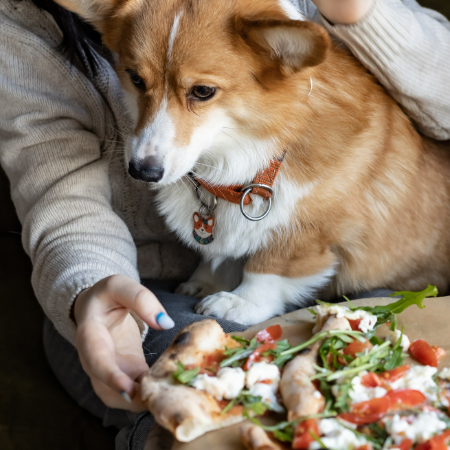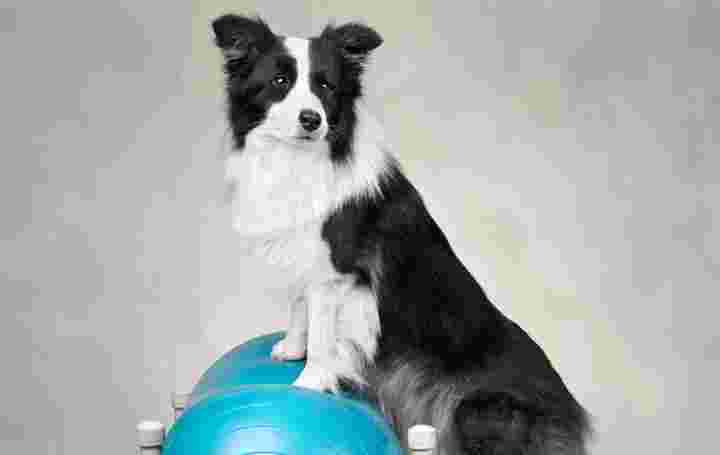How to Choose the Right Dog Food: A Guide to Nutrition
When it comes to choosing the right dog food, it’s easy to feel overwhelmed with so many options on the market. But don’t worry! We’re here to make the process fun and simple for you. Your dog is more than just a pet, they’re a beloved member of your family. So, of course, you want to feed them the best. Let’s dive into this guide on how to choose the right dog food while keeping things light, easy to understand, and, most importantly—tailored to your dog’s unique needs.
1. Know Your Dog’s Age and Life Stage
Just like humans, dogs have different nutritional needs at different stages of life. The food you feed your puppy isn’t going to be the same as what your senior dog needs. Here’s a quick rundown:

Puppies
They’re growing fast! Puppies need food that’s rich in protein and fat to fuel their growth. Look for “puppy” food on the label. These formulas will have higher calorie content and essential nutrients like DHA to support brain and eye development.
Adult Dogs
Once your dog is fully grown (usually around 1-2 years old), they’ll need balanced food with the right amount of protein, fat, and fiber to maintain their energy and overall health. It’s all about balance, so make sure it suits their activity level.
Senior Dogs
Older dogs usually need food that’s easier to digest and lower in fat. Look for foods with added joint-supporting ingredients like glucosamine and chondroitin if your dog is getting up in years and could use some extra TLC for their joints.
2. Consider Your Dog’s Breed and Size
Different breeds have different nutritional needs. Smaller dogs and larger dogs have unique requirements, and even within breeds, some dogs may have specific needs (like being more active, prone to allergies, or needing weight management).
Small Breeds
Tiny dogs tend to have faster metabolisms, so they need higher-calorie food per serving. Look for kibble that’s smaller and easy for them to chew.
Large Breeds
Big dogs need food that supports their large frames. They often need more joint support, as their size puts a strain on their bones and joints. Large-breed dog food will often have lower calories to prevent obesity, and it may include glucosamine and other nutrients to help with joint health.
3. Look for High-Quality Ingredients
If you’ve ever read the ingredients list on a bag of dog food, you’ve probably seen a bunch of names you don’t recognize. But here’s the thing: the first few ingredients are the most important! This is where you should look for high-quality sources of protein, such as:

Real Meat (Chicken, Beef, Lamb, Fish, etc.): A good source of protein is essential for muscle health. You want to see real meat as one of the top ingredients.
Animal-Based Protein (like Chicken Meal or Salmon Meal): These are concentrated forms of protein that pack a punch in terms of nutrition.
Vegetables and Fruits: Veggies like sweet potatoes, carrots, and peas, along with fruits like blueberries and apples, are great for fiber, vitamins, and minerals.
Healthy Fats (like Salmon Oil, Chicken Fat, or Flaxseed): These provide essential fatty acids, including omega-3s and omega-6s, which are good for your dog’s skin, coat, and brain health.
Avoid foods with too many fillers (like corn and soy) or vague ingredients like “meat by-products,” which can be lower quality. Always look for clear, high-quality protein and fat sources!
4. Choose Food Based on Your Dog’s Activity Level
Just like us, dogs burn different amounts of calories depending on how active they are. If you have an energetic dog who loves to run, play, and hike, they’re going to need food that can keep up with their activity level.
High-Energy Dogs
Look for formulas that are richer in calories and protein to fuel their active lifestyle. These foods will typically have more fat content and nutrients for muscle support.
Less Active Dogs
If your dog is more of a couch potato, they might need fewer calories. Foods designed for weight management or senior dogs are a good option since they’re lower in fat but still nutrient-rich.
5. Check for Special Health Needs
Some dogs may have specific health concerns that need extra attention. Whether your dog has food sensitivities, or allergies, or requires additional support for joint health or digestion, there’s dog food out there to help!
Food Sensitivities/Allergies
If your dog has a sensitive stomach or is prone to allergies, look for foods with limited ingredients or those specifically formulated for food sensitivities. Avoid common allergens like grains, beef, chicken, or dairy if you know your dog has a problem with them.
Digestive Health
Probiotics and prebiotics are great for digestive health. Look for foods that contain ingredients like chicory root or probiotics, especially if your dog is prone to upset tummies.
Joint Support
As mentioned earlier, older dogs or larger breeds can benefit from added joint support. Look for ingredients like glucosamine and chondroitin to promote healthy cartilage and joints.
6. Wet vs. Dry Dog Food: What’s Best?
Another decision you’ll face is whether to feed your dog dry kibble, wet food, or a combination of both. There’s no one-size-fits-all answer here, it all depends on your dog’s preference and needs.
Dry Dog Food (Kibble)
Dry kibble is convenient, easy to store, and great for dental health. It helps scrape plaque off your dog’s teeth, reducing the risk of dental problems. It’s also usually less expensive than wet food.
Wet Dog Food (Canned)
Wet food is higher in moisture, which is great for dogs who don’t drink a lot of water. It’s also a good option for picky eaters since it’s usually more aromatic and flavorful. However, it can be more expensive and may require refrigeration once opened.
7. Don’t Forget About Treats!
Treats are an important part of your dog’s diet too, but they shouldn’t be more than 10% of their daily calories. Look for healthy treats that align with your dog’s dietary needs. Some treats are made specifically for dental health, while others are packed with beneficial ingredients like antioxidants or omega fatty acids.
8. Monitor Your Dog’s Weight and Health
Once you’ve chosen the right food for your dog, don’t forget to keep an eye on their health and weight. Regular vet check-ups are a must, and adjusting food portions based on your dog’s activity level, age, and health status is key.

If your dog seems to be gaining weight, it might be time to cut back on portions or switch to a weight-management formula. If they seem sluggish or have digestive issues, it might be time to try a different food or consult your vet for recommendations.
Conclusion: Happy Dog, Happy Life!
Choosing the right dog food is all about finding what works best for your dog’s individual needs. Whether you’re feeding a playful puppy, a senior dog with special health needs, or a large breed in need of extra joint support, there’s food out there for every dog. Keep an eye on ingredients, consider your dog’s age and size, and make sure to check in on their health regularly. With the right food, your dog will stay happy, healthy, and ready for all the adventures life has to offer!
So, let’s raise a bowl for our furry friends! They deserve the best, and now you know exactly how to choose the right food to keep them wagging their tails with joy!
Doglime for more dog-related information.
Tags









